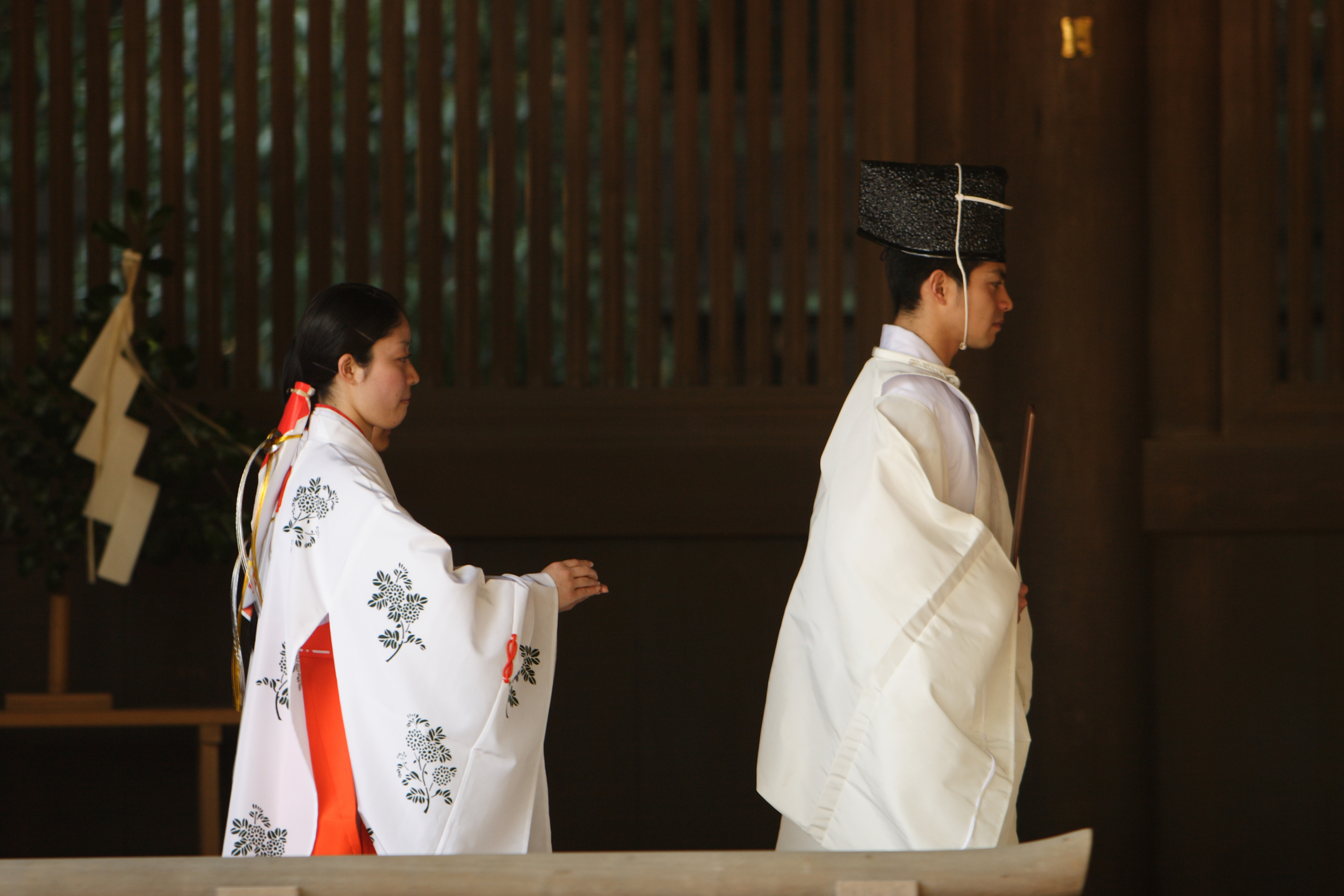Jōe (priest) on:
[Wikipedia]
[Google]
[Amazon]
 is a garment worn in
is a garment worn in
Basic terms of Shinto (with illustration)
* {{DEFAULTSORT:Joe Shinto religious clothing Japanese upper-body garments Shinto religious objects Japanese words and phrases
 is a garment worn in
is a garment worn in Japan
Japan ( ja, 日本, or , and formally , ''Nihonkoku'') is an island country in East Asia. It is situated in the northwest Pacific Ocean, and is bordered on the west by the Sea of Japan, while extending from the Sea of Okhotsk in the north ...
by people attending religious ceremonies and activities, including Buddhist
Buddhism ( , ), also known as Buddha Dharma and Dharmavinaya (), is an Indian religion or philosophical tradition based on teachings attributed to the Buddha. It originated in northern India as a -movement in the 5th century BCE, and ...
and Shinto
Shinto () is a religion from Japan. Classified as an East Asian religion by scholars of religion, its practitioners often regard it as Japan's indigenous religion and as a nature religion. Scholars sometimes call its practitioners ''Shintois ...
related occasions. The is essentially a white , traditional hunting robes worn by nobles during the Heian period
The is the last division of classical Japanese history, running from 794 to 1185. It followed the Nara period, beginning when the 50th emperor, Emperor Kanmu, moved the capital of Japan to Heian-kyō (modern Kyoto). means "peace" in Japanese. ...
.
Though both Shinto and Buddhist priests wear to rituals, laymen also occasionally wear the , such as when participating in pilgrimage such as the Shikoku Pilgrimage
The or is a multi-site pilgrimage of 88 temples associated with the Buddhist monk Kūkai (''Kōbō Daishi'') on the island of Shikoku, Japan. A popular and distinctive feature of the island's cultural landscape, and with a long histor ...
. The garment is usually white or yellow, and is made of linen
Linen () is a textile made from the fibers of the flax plant.
Linen is very strong, absorbent, and dries faster than cotton. Because of these properties, linen is comfortable to wear in hot weather and is valued for use in garments. It also ...
or silk
Silk is a natural protein fiber, some forms of which can be woven into textiles. The protein fiber of silk is composed mainly of fibroin and is produced by certain insect larvae to form cocoons. The best-known silk is obtained from the coc ...
depending on its type and use.
Shinto priests who wear the usually wear it with a peaked cap
A cap is a flat headgear, usually with a visor. Caps have crowns that fit very close to the head. They made their first appearance as early as 3200 BC. Caps typically have a visor, or no brim at all. They are popular in casual and informal se ...
known as , alongside an outer tunic - the proper - an outer robe called , an undergarment known as the (lit. "unlined" or "one-layer"), ballooning trousers called or (a variant of the ), and a girdle called . A priest may also carry a ceremonial wand known as a , or another style of baton known as a .
See also
*Glossary of Shinto
This is the glossary of Shinto, including major terms on the subject. Words followed by an asterisk (*) are illustrated by an image in one of the photo galleries.
__NOTOC__
A
* – A red papier-mâché cow bobblehead toy; a kind of ''engimo ...
External links
Basic terms of Shinto (with illustration)
* {{DEFAULTSORT:Joe Shinto religious clothing Japanese upper-body garments Shinto religious objects Japanese words and phrases